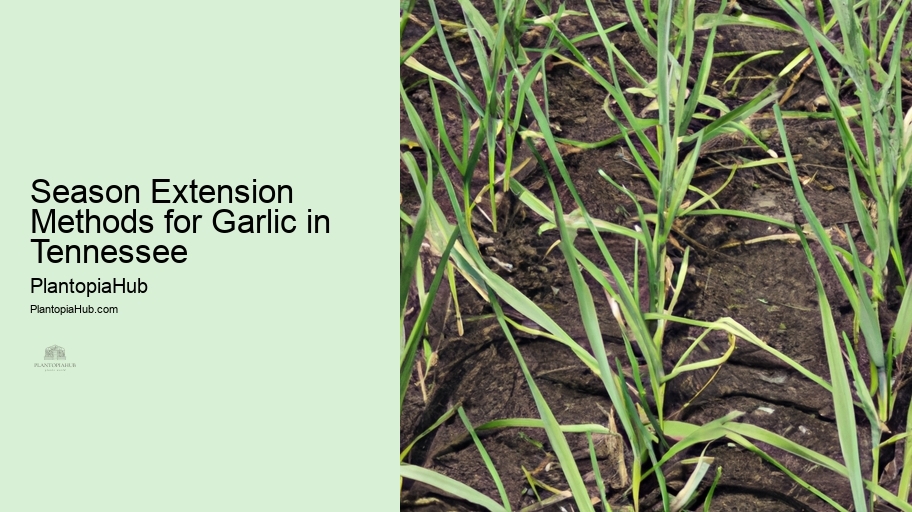

When selecting garlic varieties for Tennessee, it's crucial to consider the local climate. The state's diverse weather conditions, from hot summers to cold winters, require adaptable garlic types. Garlic Storage and Preservation Tips for Tennessee Gardeners . Varieties like "Music" and "Chesnok Red" thrive in Tennessee's climate. These robust cultivars exhibit excellent disease resistance and yield dependable harvests.
Furthermore, softneck varieties such as "Inchelium Red" and "Silver White" are suited for milder regions of Tennessee. They're known for their easy braiding, making them popular choices for market growers. Carefully assessing your local climate is the first step toward a successful garlic harvest in Tennessee.
In conclusion, adaptability is key when choosing garlic varieties for Tennessee.
Timing is everything when it comes to planting garlic in Tennessee. Typically, the best planting dates fall between late September and early November. This timeframe allows garlic cloves to establish roots before winter and ensures robust growth in the spring.
However, specific planting dates may vary depending on your location within the state. In warmer areas, earlier planting in September is advisable, while cooler regions can benefit from a late October start. To pinpoint the perfect planting window, monitor local temperature trends and consult the USDA hardiness zone map for Tennessee.
To sum up, choosing the optimal planting dates for garlic in Tennessee is a crucial step in ensuring a successful harvest. Agricultural Biodiversity Local climate and conditions should guide your decision to maximize your garlic crop's potential.
Garlic's success begins with the soil it's planted in. In Tennessee, preparing your soil correctly is essential for healthy garlic growth. Start by selecting a well-draining site with full sun exposure. Loamy, well-aerated soil is ideal for garlic cultivation.
Begin soil preparation in late summer or early fall. First, remove any weeds and debris from the planting area. Next, enrich the soil with organic matter like compost or well-rotted manure.
In conclusion, soil preparation is a critical factor in successful garlic farming in Tennessee. Investing time and effort in this stage will pay off with healthy plants and bountiful harvests.
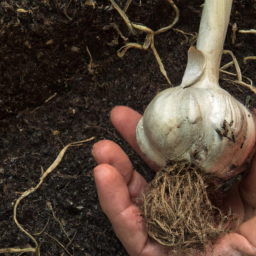

Proper garlic planting depth and spacing are key factors in achieving a successful harvest in Tennessee. When planting garlic, ensure that each clove is planted at a depth of 2-3 inches below the soil surface. Cover Crops for Soil Health Planting too shallow can expose cloves to freezing temperatures, while planting too deep may hinder growth.
Adequate spacing is equally important. Space individual garlic cloves approximately 4-6 inches apart within rows, leaving 12-18 inches between rows. This spacing allows for optimal air circulation, reduces the risk of disease, and ensures each bulb has enough room to grow.
In conclusion, paying attention to garlic planting depth and spacing in Tennessee soil is vital for a successful crop. Properly spaced and planted garlic cloves will result in healthy, vigorous plants and higher yields.
Effective watering strategies are crucial for garlic cultivation in Tennessee's variable climate. Tennessee Farmers Markets During the fall and winter, when garlic establishes roots, monitor soil moisture levels and provide supplemental irrigation if the soil becomes excessively dry. Aim to keep the soil consistently moist but not waterlogged.
In the spring, as garlic begins active growth, adjust your watering routine. Reduce the frequency of watering but increase the volume to encourage bulb development. Maintain soil moisture to prevent stress on the garlic plants.
To sum up, tailoring your watering strategy to the specific season is essential for successful garlic farming in Tennessee. Adequate moisture management will result in robust, healthy garlic bulbs at harvest time.
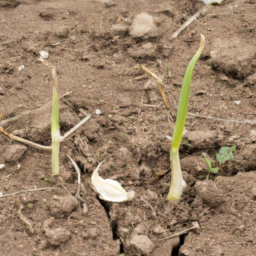
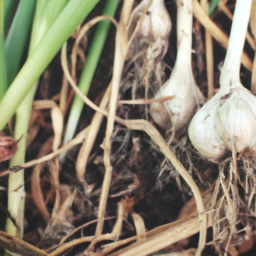
Fertilization is a critical aspect of garlic cultivation in Tennessee. Start by conducting a soil test to determine nutrient deficiencies. Generally, garlic benefits from a balanced fertilizer with equal parts nitrogen, phosphorus, and potassium. Urban Gardening Techniques Apply fertilizer in the fall, just before planting, to provide essential nutrients for root development.
Additionally, consider using organic amendments like compost or well-rotted manure to improve soil fertility. Organic matter enhances soil structure and nutrient retention, contributing to healthy garlic growth throughout the growing season.
In conclusion, meeting the fertilization needs of your garlic crop is essential for achieving robust yields in Tennessee. Properly nourished plants are more resistant to pests and diseases, ensuring a successful harvest.
Protecting your garlic crop from pests is crucial for a successful harvest in Tennessee.
If pest infestations occur, organic solutions such as neem oil or insecticidal soap can help.
In conclusion, implementing pest control solutions is essential for maintaining healthy garlic crops in Tennessee. A proactive approach to pest management will safeguard your harvest and promote strong, vigorous plants.
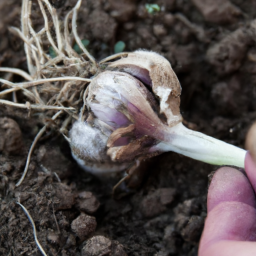
Crop insurance is essential for garlic farmers in Tennessee because it provides financial protection against unforeseen events that can impact crop yields, such as adverse weather conditions or crop failures. By investing in crop insurance, garlic farmers can secure their income and minimize potential losses, ensuring financial stability and peace of mind during challenging seasons.
The optimal time for planting garlic in Tennessee typically falls between late September and early November. It's important to consider your specific location within the state, as warmer regions may benefit from earlier planting in September, while cooler areas may choose a late October start. Monitoring local temperature trends and referring to the USDA hardiness zone map for Tennessee can help determine the best planting window.